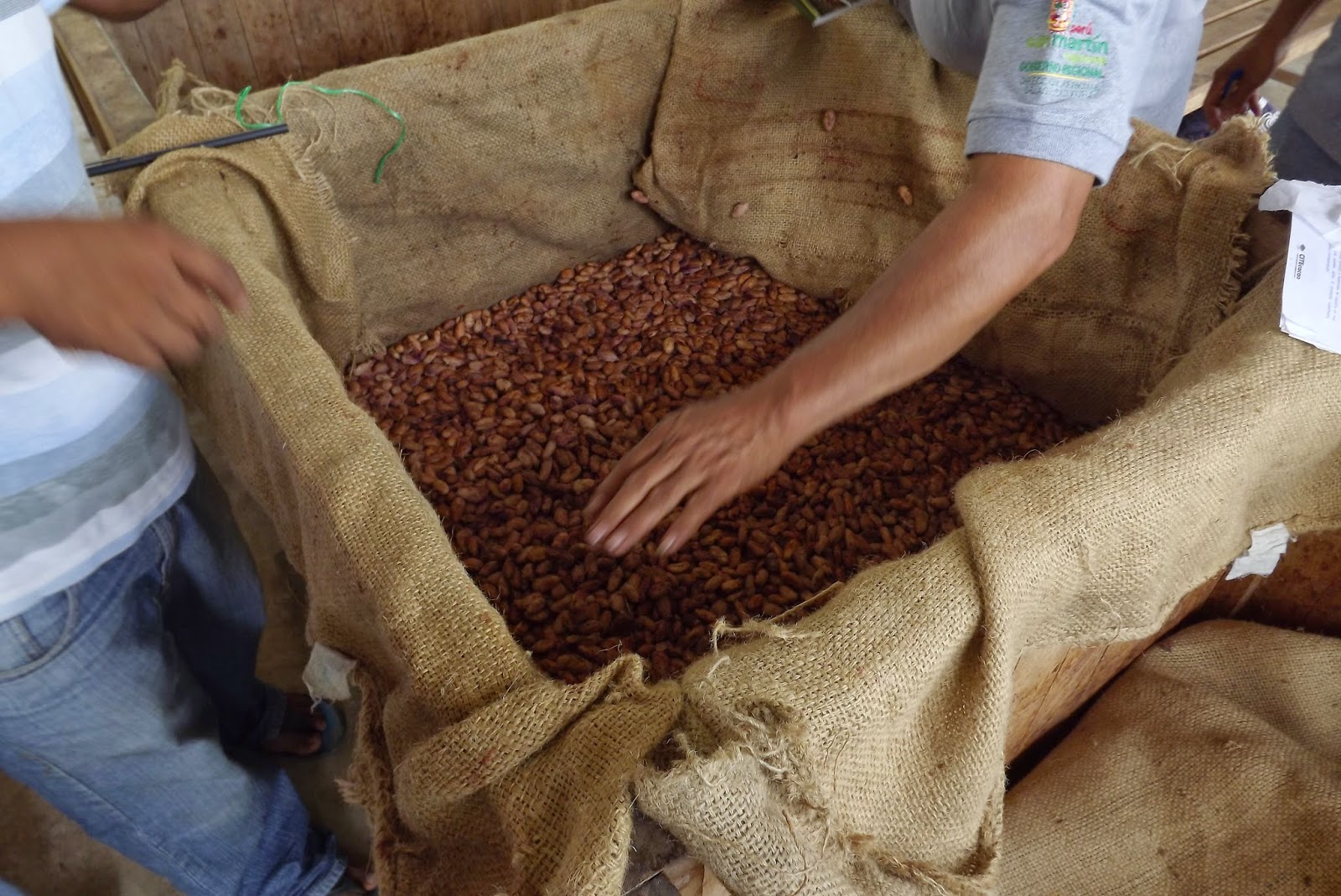We had an early breakfast and headed out to rent taxis, as it's almost a two hour drive to Chazuta. Distances are deceiving here if you only look on a map. Weather, road conditions and pit-stops on the journey can all contribute to a trip unlike the one you planned.
At the taxi depot some mild negotiating took place, and we found ourselves hiring two cars with space for a woman, her rooster, and all of us. We climbed aboard, rolled down the windows and along with our feathered companion, rumbled off down the road.
We had left early for Chazuta because we had a lot planned for the day, but as luck and Peruvian roads would have it, we were delayed halfway to our destination.
For those who might be tempted to think that a mere rope is never going to get between you and an open road, a word of warning: the road beyond just isn't. Not only is it not an open road, it isn't a road. At all. In its place is a cratered moonscape of near epic proportions, apparently not an unusual occurrence in this area, especially in the rainy season. While horses and people on foot could and did pass through with impunity, we had to sit this one out, finding a scrap of shade where we could.
A sweaty hour later we were on our way again. We bounced our way slowly through the mile-long construction zone, then, with the windows wide open, the remainder of the trip flew by and we arrived at Chazuta in short order.
Our hosts greeted us at the town office where we were welcomed as the new CUSO voluntarios. We then enjoyed a discussion on economic development initiatives, much of which could not be heard due to the ongoing excavation of the street outside. I must admit, however, that with my primitive understanding of Spanish, hearing probably would not have helped significantly. After sharing a massive bottle of Inca Kola, we stuffed ourselves into mototaxis and headed out of town towards the cacao plantation.
Allima Cacao is a cooperative, where the cacao is grown, harvested, processed and sold by members of the co-op. The science behind this process is surprisingly complex. At least to me it was, because I really had NO idea how chocolate came to be. I was just happy it existed.
Chocolate grows on trees. Yes, it does. They are pretty trees, on the squat side, and pruned extensively. The blossoms are tiny and delicate, and grow directly from the main trunk and branches.
The leaves are copper-colored when young, silky in texture and almost transparent.
The mature leaves are leathery and dark green with heavy veins. The type of cocoa plant we saw on this plantation grows and produces all the time, while there are other cultivars with a more distinct time for production.

The fruits are oblong, about 8 inches long when mature, and have a thick deeply wrinkled skin, leathery in texture and a deep wine red in color. Some of the fruits can be orange or a lighter red.
The fruit is heavy for its size and when mature has a duskiness to the skin, as if it were covered in wax or dust. It is at this point that it is picked for processing.
It is hand-harvested, the fruit cut off the tree with a type of pruning shears and placed in a jute bag which the harvester carries on his/her back with a long strap up and around the forehead. The fruits are handled carefully to prevent bruising. The harvest is taken as soon as possible to the co-op for processing. This may in some cases involve a long boat journey and getting the bags down from the growing areas to the river.
The next stage of harvest is where it gets even more interesting. The pods are split with a dull machete to avoid damaging the internal seeds or grains.
The seeds and their accompanying jelly are checked to make sure they are healthy-looking and the whole "dough" as it is called, placed in wooden drawers lined with jute.
The dough is covered with plantain leaves and a layer of jute to favor fermentation.
The seeds are
fermented in their dough for 48 hours in the first drawer, then every 24 hours they are moved to a new drawer, also lined in jute. Moving is done quickly to avoid heat loss, as even fermentation is necessary for the best chocolate quality.
Once properly fermented, the seeds are laid out in layers about 3" thick on mesh tarps laid over cement slabs. They dry slowly in the sun. They are stirred every hour for the first day, then every two hours for the next, to facilitate a slow drying process.
On the third, fourth and fifth days, they are placed in thinner layers to continue drying, and once they reach a humidity of 7.5% they are ready to process. They are also stable enough to store at this point.
The seeds are then collected and checked for impurities and defects, and bagged for storage in jute bags. These are placed off the ground on wooden pallets and stored in warehouses where they are out of the rain but where air circulates freely around the bags. The seeds are quite porous and absorb odors easily so care must be taken in their storage.
From here the cocoa seeds go for processing to be made into cocoa powder and that delicious confection to which many of us are addicted-CHOCOLATE in its many forms...
But, that is another whole story, and one I will be happy to share with you next time. For now, my friends, may dreams of fermenting cacao beans fill your heads. I will return with the rest of this sweet story in my next post.
Hasta luega!


























